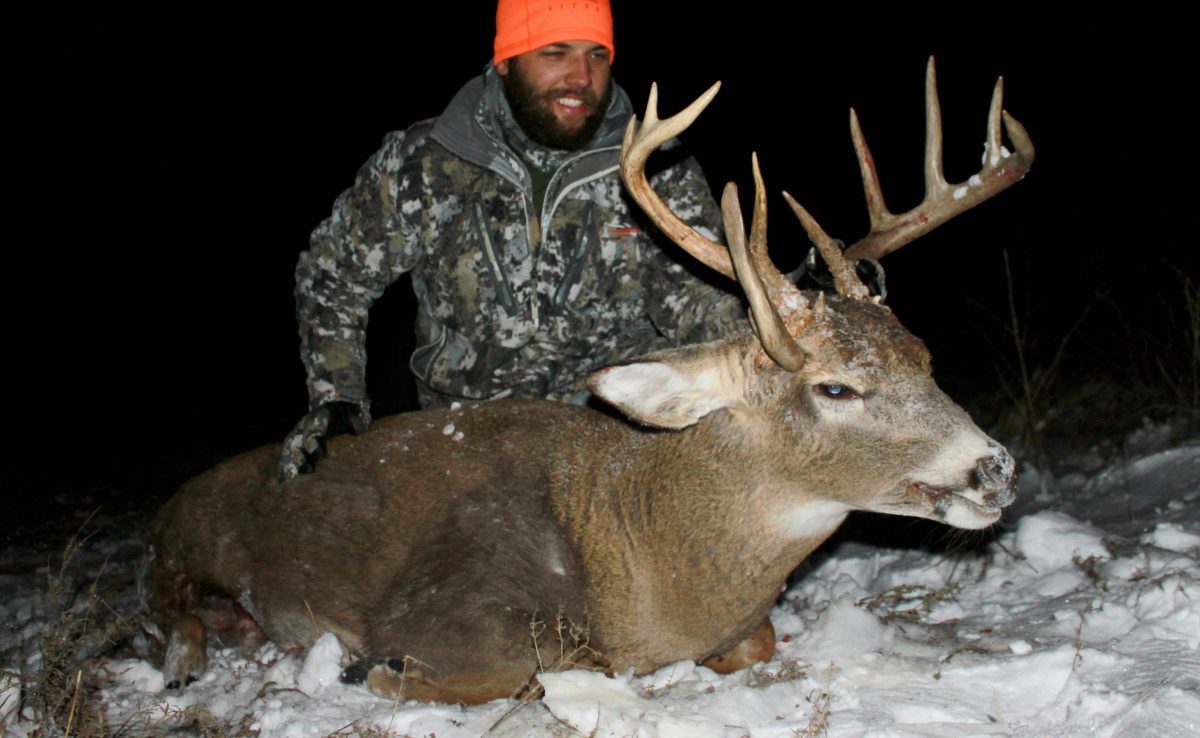On a recent rifle hunt in South Dakota, I harvested the coolest buck that I’ve ever seen on hoof. When I originally glassed him, I could only see his left side, which made him look like a typical 10-point. I was undecided if he was a shooter, but my mind was made up when he gave me a profile view of his entire rack.
What he carried on the other side was a smaller 4-point antler, along with an extra 11-inch main beam. My shot was true, and I sat in awe over the deer when I got my hands on its unique rack. I couldn’t help but wonder why some bucks develop like this? As it turns out, it’s something that no one seems to agree on.
 A close-up of the author’s non-typical third main beam buck.
A close-up of the author’s non-typical third main beam buck.
Without doing any research, I assumed this was something genetic. Not many feel the same way, though. The Kentucky Department of Fish & Wildlife is one group that promotes this idea, saying that genetics is likely the culprit if other deer in the area show similar growth or if some bucks grow racks like this year-after-year. Hunting in this area for the last ten years, I’ve never seen another buck like this, so I don’t think genetics is the answer in my case.
Another possibility is that this deer suffered some sort of injury. Mississippi State University claims that leg injuries can cause abnormal antler growth. The theory is that some crippling hind leg accidents can alter blood flow or nerve stimulation, which makes the opposite antler grow deformed. Although this is unconfirmed, many biologists agree with the idea. My buck, however, had no noticeable limp or damage that I could see during the butchering process.
Maybe it was some other sort of injury? One Quality Deer Management Association biologist thinks that these injuries usually happen to the antlers early in the growing process. He believes that a buck can damage their antlers while in the beginning stages of velvet, which can make for a split main beam. A buck that has this sort of injury will only grow a rack like this for a single year, while growing normal non-split main beams for the rest of their life.
A similar theory is that an injury can occur to a deer’s pedicle, which is the base of where a buck’s rack grows from. If the injury were to occur here, it’s thought that the damage is so severe that it will move collagen fibers to other parts of the skull, thus, causing abnormal growth. This is essentially enlarging the deer’s pedicle, and changing its shape. An injury of this magnitude would affect the buck for the rest of its life and forever give it abnormal points.
For my deer in particular, I think the last theory is the most likely explanation for his triple main beam. Not only does he have the 11-inch dagger coming out from well below his other beam, he also has four more kicker points that are sprouting from the base of this antler, including one that is nearly four inches long and crawls across its skull towards the other antler.
Biologists that prop this theory up say that injuries like this are most likely to occur in areas that have high densities of big bucks, since they’re probably the ones dishing out this sort of punishment to other deer’s pedicles. For the sake of my 2017 season, I hope they’re right.







